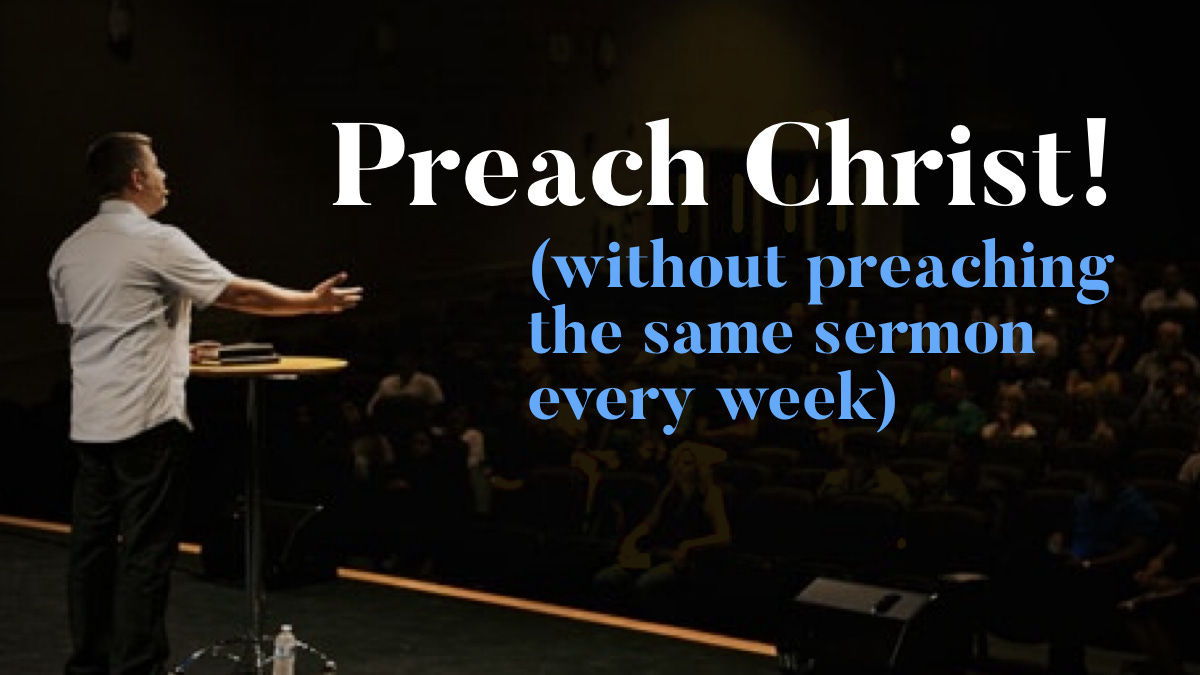Seven Ways To See Christ in the Old Testament
It doesn't take long in a conversation about preaching Christ before someone says "Are you just trying to find Jesus under every rock?" Arguably, the bigger problem in Evangelical preaching is finding no Christ where it turns out Christ was the rock (1 Cor 10:4). Nonetheless, it's a good question at the root: how do we preach Christ in the Old Testament? But there's a bigger problem at stake.
Too many Christ-centered sermons are boring.
It's not that Christ-centered preaching is boring inherently. Done well, Christ-centered preaching is some of the most thrilling preaching that any Christian can hear. However, Christ-centered, or gospel-centered, preaching can often be formulaic. No matter the text, it ultimately ends up being about sin and the need to forgive. Every sermon is just the prodigal son with new characters. Or, if you're onto recent trends, every sermon is about the "truer and better Jesus", to borrow from Tim Keller. Typology takes over. Preachers plug their text into their typology formula and out pops the same sermon week after week, only with a new text.
In his book Preaching Christ from Ecclesiastes, Sidney Greidanus begins with a really helpful summary of how to preach Christ in 7 different ways. It's an excellent volume for preachers. Referencing John 5:39-40, Greidanus writes, "We should not just preach the Old Testament scriptures but link them to Christ so that people can have life." Greidanus says he became convinced that the church fathers were right: "A Christian sermon must preach Christ" (24).
Below I'll list his 7 ways to preach Christ from the Old Testament and try to provide a short summary of each. Note: not every passage can be preached in every way, but there is no passage from which a preacher cannot or should not preach Christ.
Redemptive-Historical Progression
Preach Christ by connecting the Old Testament passage to the plan of redemption: from the Fall, through Israel's history, to the incarnation and saving work of Christ and then the Second Coming. How does this fit into God's cosmic work of redemption?
Promise-Fulfillment
When the Old Testament makes a direct messianic promise, preachers have a clear path to show how Christ fulfills that promise. Some books, like Ecclesiastes, have no messianic promises.
Typology
Redemptive events, persons or institutions can function as types of a greater Antitype: the person and work of Jesus. Typology points to the intentional pattern or implicit claims of New Testament authors to show how Jesus is foreshadowed. Examples are Joseph redeeming Israel, the way Galatians uses the narrative of Ishmael and Isaac, and the temple.
Analogy
On occasion, the teaching of the OT will connect to the teaching of Jesus through analogy. For example, Jesus teaches "do not store up treasures for yourself on earth", where the book of Ecclesiastes shows the vanity of that very thing.
Longitudinal Themes
The Bible is rich with themes that run from the Old Testament to the New Testament. These are the themes that cover the arch, or metanarrative of scripture. These themes include fearing God, holiness, wisdom, etc. Christ is wisdom (1 Cor.), wisdom is with God at creation (Prov 8), extolled throughout Scripture as the way of salvation.
New Testament References
Oftentimes, an OT passage plays a significant, explicit role in New Testament teaching. In nearly every case, it is done to show how Christ is the culmination or fulfillment of that text. (A great resource on this is Carson and Beale's Commentary on the New Testament Use of the Old Testament.)
Contrast
Sometimes, Christ seems utterly absent from a passage. Where is Christ when the writer of Ecclesiastes says, "All is vain (Eccl 1:3)?" Where is Christ in the wickedness of the book of judges, as they divide up a concubine and send it around the nation? Where is Christ is the unfaithfulness of Saul? He is there by contrast. In the face of traps, lies, and death, Jesus is the way, the truth, and the life.
I believe that Greidanus provides a really excellent grid for pastors and preachers to use in preaching Christ. He cautions against allegorical interpretation; the irony is that so much of what he does here is precisely what early church authors would have called allegory: typology, analogy, and thematic readings! Nonetheless, preachers are helped to think about texts in this way.
Greidanus says it this way: "It's not a matter of trying to find Christ under every rock but it's a matter of connecting the dots... the dots that run from the periphery of the Old Testament to the center of God's revelation in Jesus Christ."
For more from Greidanus, here's an interview he did a while back with Eerdmans for his Preaching Christ in Daniel volume.




